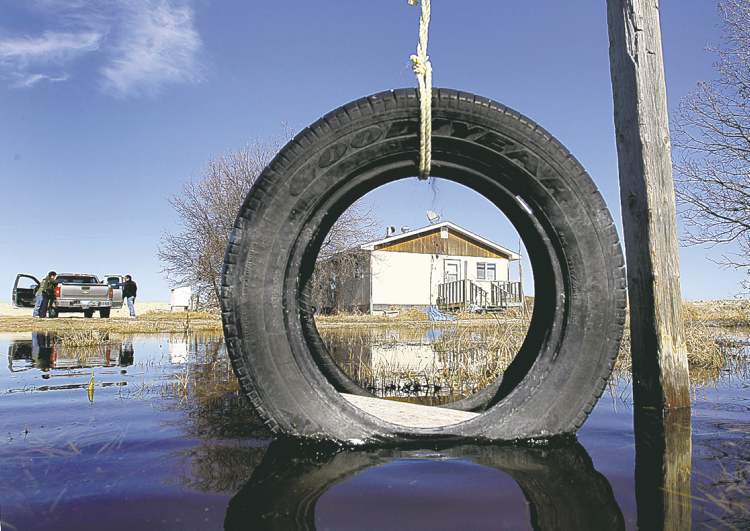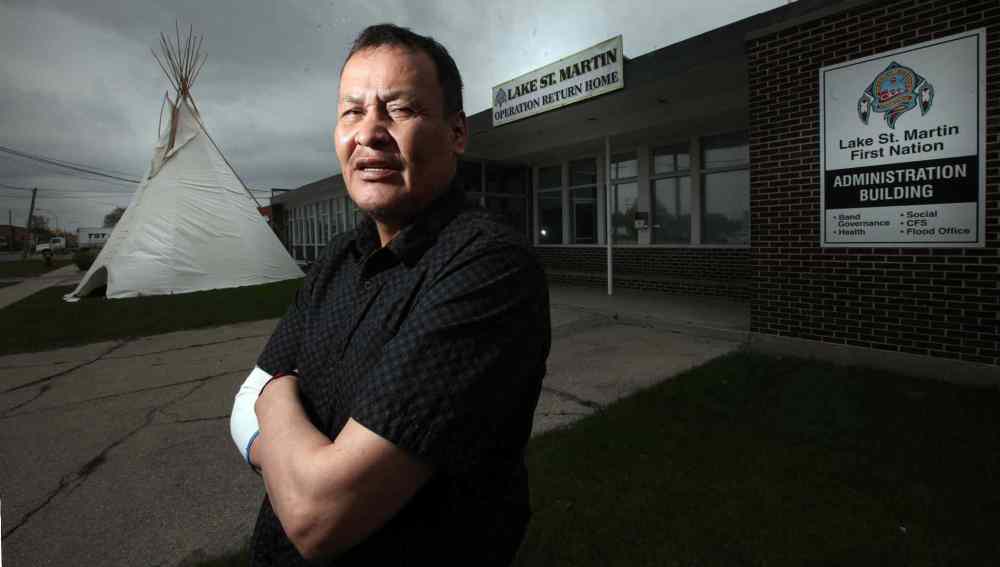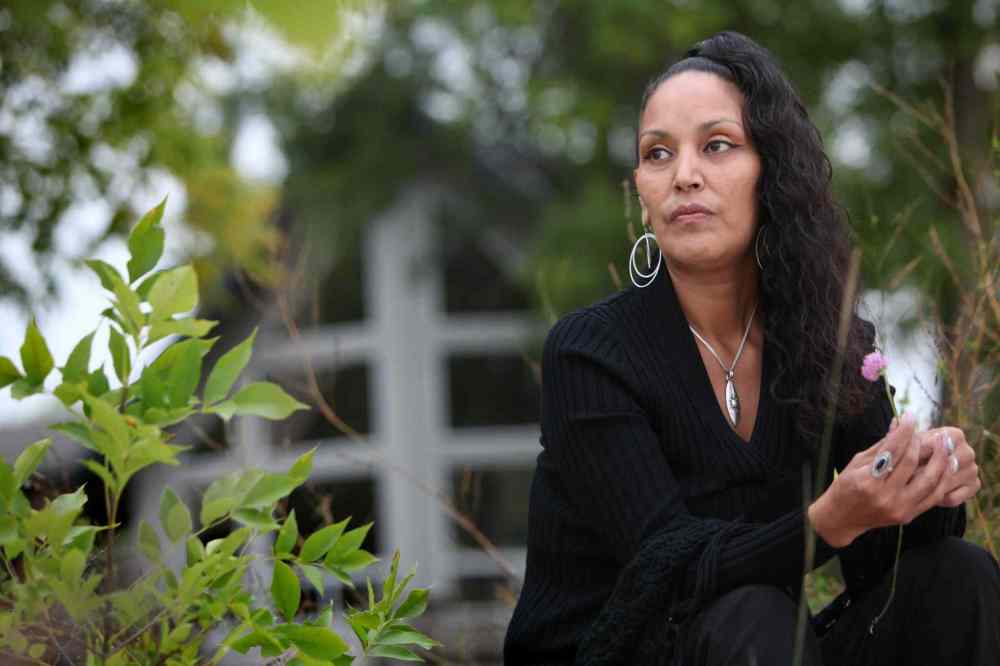Four years and $115 million later, some flood evacuees no closer to home
Advertisement
Read this article for free:
or
Already have an account? Log in here »
To continue reading, please subscribe:
Monthly Digital Subscription
$1 per week for 24 weeks*
- Enjoy unlimited reading on winnipegfreepress.com
- Read the E-Edition, our digital replica newspaper
- Access News Break, our award-winning app
- Play interactive puzzles
*Billed as $4.00 plus GST every four weeks. After 24 weeks, price increases to the regular rate of $19.00 plus GST every four weeks. Offer available to new and qualified returning subscribers only. Cancel any time.
Monthly Digital Subscription
$4.75/week*
- Enjoy unlimited reading on winnipegfreepress.com
- Read the E-Edition, our digital replica newspaper
- Access News Break, our award-winning app
- Play interactive puzzles
*Billed as $19 plus GST every four weeks. Cancel any time.
To continue reading, please subscribe:
Add Free Press access to your Brandon Sun subscription for only an additional
$1 for the first 4 weeks*
*Your next subscription payment will increase by $1.00 and you will be charged $16.99 plus GST for four weeks. After four weeks, your payment will increase to $23.99 plus GST every four weeks.
Read unlimited articles for free today:
or
Already have an account? Log in here »
Hey there, time traveller!
This article was published 08/05/2015 (3829 days ago), so information in it may no longer be current.
Many evacuees from Manitoba’s 2011 flood remain stranded in temporary accommodations.

Evacuees from that flood who are still in rentals and hotels in Winnipeg will mark the fourth year of their exile with a march through downtown Winnipeg to the regional headquarters of the federal Aboriginal Affairs department Friday on Hargrave Street.
The route starts at 10 a.m. at 555 Berry St., the location of the city-based Lake St. Martin First Nation government office, along Berry to Portage Avenue. Organized by Adrian Sinclair, the chief of Lake St. Martin First Nation, the protest will move along Portage Avenue to reach the downtown location of the federal office, at 365 Hargrave St. at noon. Plans call for the marchers to go back to Berry Street along the same route.
The Canadian Red Cross continues to pay rent for 1,914 people. The total cost of the evacuation, as of January, was $115.6 million and rising. That’s more than the estimated $100-million cost of rebuilding the Lake St. Martin reserve.
Even after four years, two levels of government and four First Nations can’t agree on how to get the people home.
For the displaced people, it wasn’t supposed to be this way.
Muriel Woodford

“We didn’t know we were going to be away this long,” said evacuee Muriel Woodford, a former councillor from Little Saskatchewan First Nation who is living with her husband and 22-year-old disabled son in a three-bedroom house on Selkirk Avenue in Winnipeg. Red Cross pays the rent, which includes utilities. With Woodford between jobs, Little Saskatchewan pays the family’s food in welfare cheques.
“A lot of people are struggling here, trying to make ends meet. A lot of people with chronic depression are getting sicker. CFS is called in more often. There have been attempted suicides… and gangs. I read about it on Facebook,” Woodford said.
Evacuees describe themselves as traumatized and helpless. Hardest hit are the people who never lived away from the reserve before the flood. They have turned to people such as Woodford who know their way around the city.
“Some of these people have never been away from the community. It’s like putting someone in a jungle. They don’t know the resources, how to go about getting things to help themselves,” Woodford said.
“They call. That’s when I try to talk to some of them. I tell them there’s more to live for. Things will get brighter.”
There are 374 evacuees in Winnipeg from Little Saskatchewan and 1,260 from Lake St. Martin, according to its leaders. The rest are from Pinaymootang and Dauphin River. Pinaymootang is the one First Nation that pulled success out of chaos, acquiring enough new homes to move most of its people back home.
Edee O’Meara

Edee O’Meara and her three children have moved more than 20 times in the last four years. The evacuees from Lake St. Martin have lived in six hotel rooms, three rentals and spent months couch-surfing at the homes of friends and relatives until they were relocated to Misty Lake Lodge in Gimli. There, a squabble over unpaid hotel bills blew up into a scandal that destroyed the reputation of the evacuees’ aid agency and forced the lodge to close. Evacuees such as O’Meara were caught in the middle, intimidated by agency staff until they moved out of the lodge.
She recalls being sent back to the same hotel where she’d spent her first days as an evacuee. “It was like going backward. I broke down completely,” said O’Meara, reached Thursday in Saskatchewan. “I lost all my fight and went into a horrible depression.”
Things are better now, she said, describing “de-evacuating my family, taking us out of the state of being evacuated. As evacuees, we feel segregated, isolated, set apart from the society and a lot of us feel forgotten. It’s dangerous.”
For the last several months, the O’Mearas have spent two weeks each month at Poundmaker First Nation in Saskatchewan, a community with a history of healing traumatized First Nations people. The children have returned to school part time. O’Meara is in love. “Yes, there’s a love story intertwined here,” she said joyfully.
Bertha Travers
At first, Bertha Travers dug in her heels and ignored warnings to leave Little Saskatchewan in 2011.
“I had a dog, and they told us to leave our pets behind, someone would look after them. It was only supposed to be a few weeks. I didn’t want to leave my dog so we stayed back,” Travers recalled.
Day later, her sister died in a car crash with a school bus in Lundar. The tragedy hit the headlines but it was Travers, still in Little Saskatchewan, who was left to make funeral arrangements. “I was so devastated. I didn’t feel like moving.”
About a week later, she had to move. The water was rising.
“The day the water was halfway up the wheels on my Jeep, I said to my dog, ‘Chill, it’s time we moved on.’ ” Travers drove out of her driveway and she hasn’t been home since.
In her mid-60s, Travers has managed to keep working to support herself. She has settled in a two-bedroom house in Selkirk where she’s found some peace.
The federal government posts online updates on the progress of resettlement talks.
The province issued a statement this week: “Our goal is to ensure that an evacuation of this magnitude never happens again, and we set aside $100 million to deal with the chronic flooding of First Nations caused by the flood-protection infrastructure that protects Winnipeg, such as the Fairford outlet.”
It made no mention of when people will return home.
First Nations leaders say distrust and suspicion is fuelling today’s protest.
“I don’t want the public to think we’re always asking for handouts. We’re not begging. Enough is enough. Give us our community back before we’re all assimilated. We’re not begging. We’re asking for what’s rightfully ours,” Lake St. Martin Chief Adrian Sinclair said.
alexandra.paul@freepress.mb.ca
History
Updated on Friday, May 8, 2015 6:46 AM CDT: Replaces photos, changes headline
Updated on Friday, May 8, 2015 9:45 AM CDT: Updates with info on protest marchm, rearranges photos


